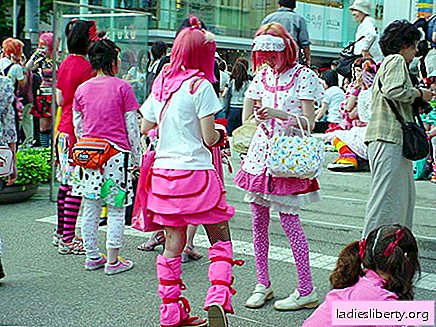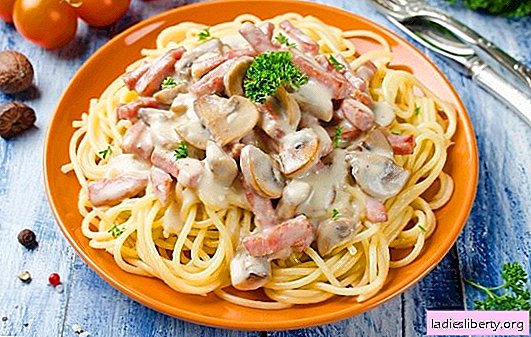
Japan - An island country located in East Asia, in the Pacific Ocean, east of China, the Sea of Japan, Russia and Korea (North and South). It covers the territory from Taiwan and the East China Sea in the south to the Sea of Okhotsk on the north. Japan is located on the Japanese archipelago, numbering 6,852 islands, most of them mountainous and volcanic. Fuji Volcano is the highest point of Japan.
According to 2011 data, the population of Japan amounted to 126.4 million people, of which the Japanese - 99%. National minorities are represented by the Chinese, Koreans, Rukoscos, Japanese Peruvians, Filipinos, and Japanese Brazilians.
The vast majority of the population speaks Japanese.
The national currency of the country is the Japanese yen. Money can be exchanged at banks (Sunday and public holidays - weekends) and Tokyo International Airport, where exchangers work around the clock. Currency exchange can also be made in hotels, but there is a norm of $ 300 per person per day.
Payments by credit cards and traveler's checks are widespread.
Most Japanese people practice Buddhism and Shintoism. Every year the number of adherents of Christianity and all sorts of sects is growing.
Japan - the capital and major cities
In Tokyo, the capital of Japan, 13,051,965 people live (as of 2010). Here are the government, parliament and the residence of the emperor, having the status of "a symbol of the unity of the nation and the state" and does not affect the adoption of government decisions.
The city itself covers an area of 2187.65 km². The population density is 5966.20 people / km² and this suggests that Tokyo is currently one of the most densely populated cities on the planet.
The capital of Japan is a huge metropolis with global financial centers, skyscrapers in one part and narrow streets and small cozy houses in another. Translated "Tokyo" from Japanese as "Eastern Capital". The city until 1896 was not the capital of Japan and was called Edo.
In Japan, there are two more huge cities - Osaka and Yokohama.
Japan - holidays and tours
Since the climate of Japan is different in different parts, the tourism opportunities in the south and north are very diverse. While in the southeast of Honshu Island, in Okinawa and Kyushu, famous sea resorts are located, in the north - in the Japanese Alps and in Hokkaido, everything is adapted for winter sports. A lot depends on the time of the visit to Japan, but in any case no one is lost. Everyone knows with what trepidation the Japanese relate to their own history, so excursions can last just endlessly.
Ski resorts such as Naeba, Mitsumata, Tashiro, Kagura, Ski Niseko and Furano are very popular.
On the Japanese islands for a beach holiday, you can recommend Kamakura (the oldest capital of Japan), Kerama, Okinawa, Iwo Jima (the best dive sites), Ryuku, the Noto Hanto Peninsula and the Miyazaki area.
Okinawa Prefecture is a great place for diving. There is a very diverse fauna of the ocean due to the warm waters of the Kuroshio.
Many excursions are organized on Mount Fuji and other volcanoes (active or sleeping). Among the active ones, one can distinguish Asosan, Asama, Sakuradzima and Miharayama.
Japan - Attractions
The Imperial Palace, and once the Edo Castle, is now surrounded by a picturesque moat, throughout which ancient towers and magnificent gates stand evenly. The main entrance can be accessed via the elegant Double Bridge (Nijubashi). The ideal place for visitors is the garden at the palace, which has seasonal multicolor.
Tokyo Disneyland is the country's most popular theme and leisure park. It can be reached by train in 17 minutes (from Tokyo Station to the Mayihama area).
In the Fuji-Hakone-Izu National Park, in a beautiful mountainous area, there is a resort with hot springs Hakone.
Nara Park is also known as a deer park, as these beautiful tame animals live there. In its western side is the Buddhist temple Kofukuji, built back in 710.
Also very famous is the Great Shinto Shrine of Kasuga, founded in 768. It is considered the most famous Shinto shrine in Japan.
Not far from Nara (45 minutes by train) is the Horyuji Buddhist Temple, founded in 607. It includes about 40 buildings and is considered the oldest wooden building in the world.
In the center of Kyoto stands another example of Japanese architecture - the Imperial Palace. To visit it, you must obtain permission in advance, which is issued in 20 minutes. prior to the excursion upon presentation of a passport. Nearby is Nijo Castle, which once served as the seat of the Tokugawa Shogun.
In the western part of Kyoto, there are two Buddhist temples of Ryoanji and Kinkakuji. The brilliant Golden Temple (Kinkakuji) is very different from the Ryoanji Temple - it houses a rock garden that personifies the pristine nature.
In the Kansai area, tourists will be curious to see the Osaka Castle, built in 1586 and once the largest in Japan.
The unique gardens of Japan will not leave indifferent any tourist. This is an art that has absorbed the principles of Shintoism and Buddhism, the sophistication of aristocrats from the ruling classes, which glorifies the beauty of nature with the help of the highly artistic harmony of water, sand, plants and stones. Most of the gardens, whose age is estimated at centuries, are located on the territory of temples.
Kyoto is especially rich in such gardens - these are gardens in the Kinkakuji and Ginkakuji temples, in the Imperial residence called Katsura, in the Ryoanji temple and in Nijo castle.
In Tokyo, you can visit the gardens of Hama Rikyu, Higashi Gyoen, and Koisikawa Korakuen. The garden located in the Shinjuku Gyoen Park is also worth special attention. Now it is a state-owned one, and once it was a favorite place for walking of the imperial family.
Japan - weather (climate)
The country's climate is clearly divided into four seasons and each of them is full of its own charm. The best time for tourism is the autumn and spring seasons.
In the north, a temperate climate prevails, while in the south - tropical monsoon and subtropical. Summer throughout the country is quite hot - in the north + 30 ° C and in the south + 38 ° C. Also in summer, the highest rainfall, high humidity and frequent typhoons.
Winter is quite cold - at Hokkaido -15 ° C, at Honshu -5 ° C, and at the Ryukyu archipelago - + 16 ° C and a lot of snow falls.
The islands are best visited in spring (cherry blossom time) and in late September - early October. During these periods, the air temperature is usually not lower than + 17 ... + 20 ° С and the humidity is not so high (although typhoons are frequent in the fall and cold winds in the spring).
Weather in Japan now:


Japan - cuisine
The cuisine of Japan is very original and unusual, due to its territorial location.
On the one hand, the food here is quite simple, and on the other, to cook it, you need maximum concentration and skill.
In any Japanese restaurant you can try sushi (rice balls with various fillings) and sashimi (raw fish with wasabi and soy sauce seasonings). In addition, there is a wide assortment of recently caught squids, octopuses and other marine animals.
It is worth trying yakitori (chicken with vegetables), shabu-shabu (tender beef slices), sobu and undon (dishes from Japanese burdock). For the most brave, you can offer "fugusashi" made from poisonous puffer fish.
Japan is famous for its "sake", which is customary to use when heated to body temperature. Its strength is 18-20 degrees.
Japan - interesting facts
In Japan, it is not customary to tip, here it is regarded as an insult.
Also, you can not smoke in most public places, cars and houses without the permission of the owner.
You can not become shod with a foot on the "tatami" (straw mats), as this will be regarded as sacrilege.
Japan - visa application
To enter Japan you need to have a passport and apply for a visa. It usually takes 30-40 days. The visa itself is free of charge, only a fee for processing and sending documents to Japan in the amount of 5-10 USD is paid. A visa is valid for 3 months, and its validity can be extended. Citizens of the Russian Federation need to have a guarantor who lives in Japan.
Japan - Embassy
129090, Lane Groholsky, building 27
tel. (495) 229-2520, 229-2550 / 51
Map of japan












